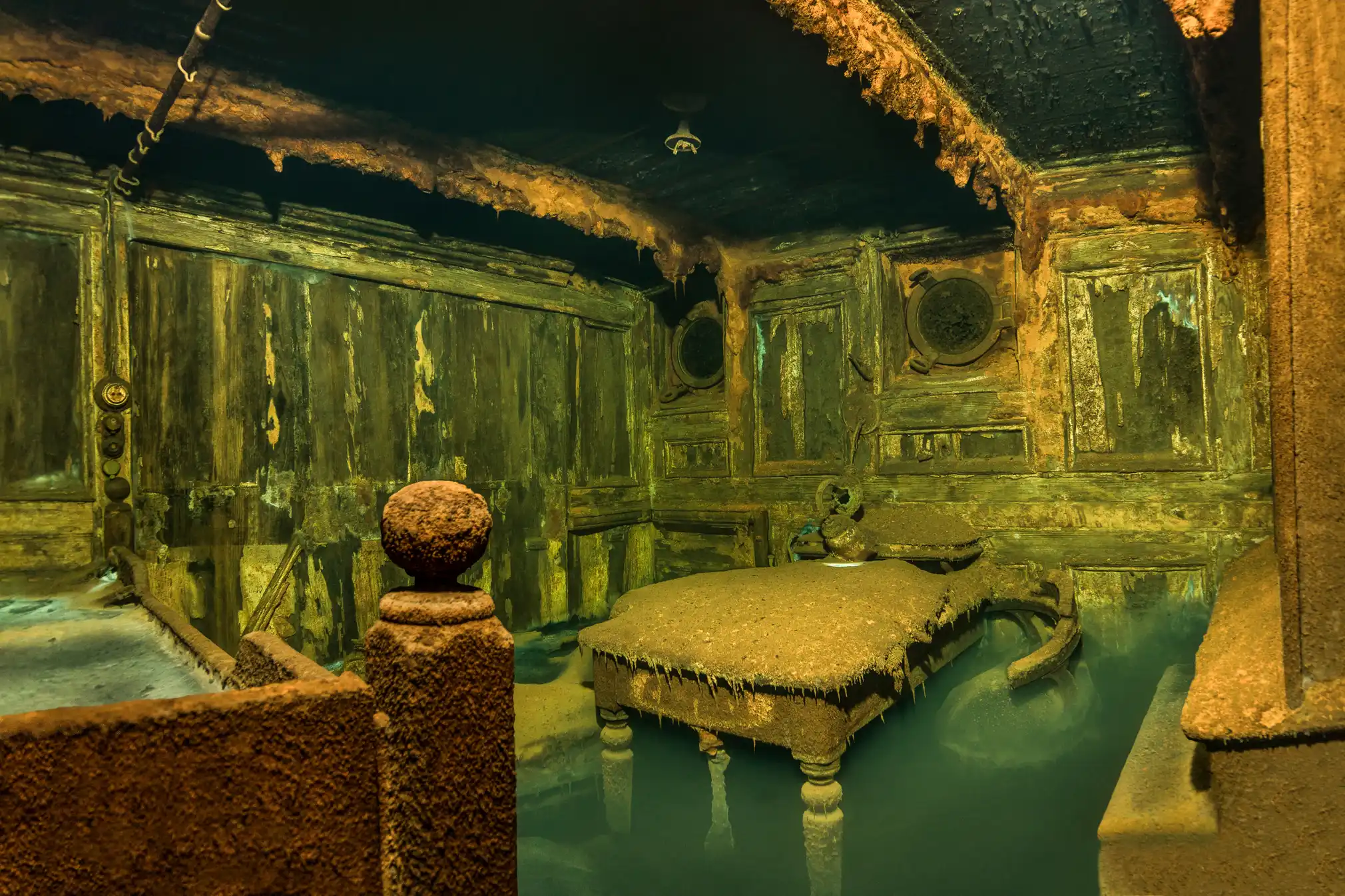Beneath the cold, dark waters of the Baltic Sea lies a haunting relic from the early 20th century—an old cabin from the steamship Aachen. This ship, once a proud vessel navigating the European waters, met its tragic end during the height of World War I. On a fateful day in July 1915, the Aachen was struck by a torpedo, sending it to the bottom of the sea, where it remains to this day, preserved by the icy depths.
The Steamship Aachen
The Aachen was a steamship built in the latter part of the 19th century, designed for the robust and efficient transport of goods and passengers. It was a symbol of the era's technological advancements, with its powerful steam engine and sturdy iron hull. The ship was part of a fleet that connected various European ports, contributing to the bustling trade and communication network that defined the continent in the pre-war years.
The ship’s cabins, though modest by today’s standards, were considered comfortable for the time. They were adorned with wooden paneling, brass fixtures, and simple but sturdy furniture, offering a safe and cozy haven for travelers crossing the often turbulent waters of the Baltic Sea.
The Tragic Sinking
As the First World War raged across Europe, the seas became increasingly perilous. The waters of the Baltic, once teeming with merchant ships, turned into deadly battlegrounds, with submarines lurking beneath the waves. On a July day in 1915, the Aachen was on one of its routine voyages when it encountered its tragic fate. A torpedo, launched from an unseen enemy submarine, struck the ship with devastating force. The explosion tore through the hull, and within minutes, the Aachen began its descent to the ocean floor.
The sinking of the Aachen was swift and brutal. There was little time for the crew and passengers to react. As the cold waters flooded the ship, many were trapped inside, their final moments spent in the once-safe cabins that now became their tombs.
The Cabin at the Bottom of the Sea
Now, over a century later, the Aachen rests silently on the seabed, its iron hull slowly corroding away. However, the cold, low-oxygen environment of the Baltic Sea has remarkably preserved some parts of the ship, including one of its cabins.
This cabin, now encrusted with marine life, offers a poignant glimpse into the past. The wooden panels are still visible, though they have taken on a ghostly pallor, bleached by the saltwater. Brass fixtures, tarnished but intact, cling to the walls, a testament to the craftsmanship of the shipbuilders. The bed, with its iron frame, lies askew, as if still swaying with the ship’s final moments of life.
The cabin is more than just a remnant of a bygone era; it is a silent witness to the tragedy that unfolded on that summer day in 1915. It stands as a stark reminder of the human cost of war, a war that reached even the most remote and unexpected places.
Rediscovering the Aachen
The discovery of the Aachen's remains has attracted the attention of historians and marine archaeologists. It provides a unique opportunity to study a well-preserved example of early 20th-century maritime technology, as well as the personal effects left behind by the passengers and crew.
Efforts to explore and document the wreck are ongoing, though they are hampered by the challenging conditions of the Baltic Sea. The cold, dark waters make exploration difficult, and the wreck itself is fragile, with over a century of exposure to the elements taking its toll.
A Maritime Memorial
The cabin of the Aachen, now at the bottom of the Baltic Sea, is a poignant memorial to those who lost their lives in the early days of naval warfare. It is a symbol of a world long gone, preserved in the icy depths, untouched by time. As we explore and remember the Aachen, we are reminded of the fragility of life and the inexorable passage of time, as well as the enduring impact of the tragedies that shape our history.
The story of the Aachen and its sunken cabin is a reminder that history is not just written in books but is also preserved in the deep, hidden corners of our world, waiting to be discovered and remembered.







